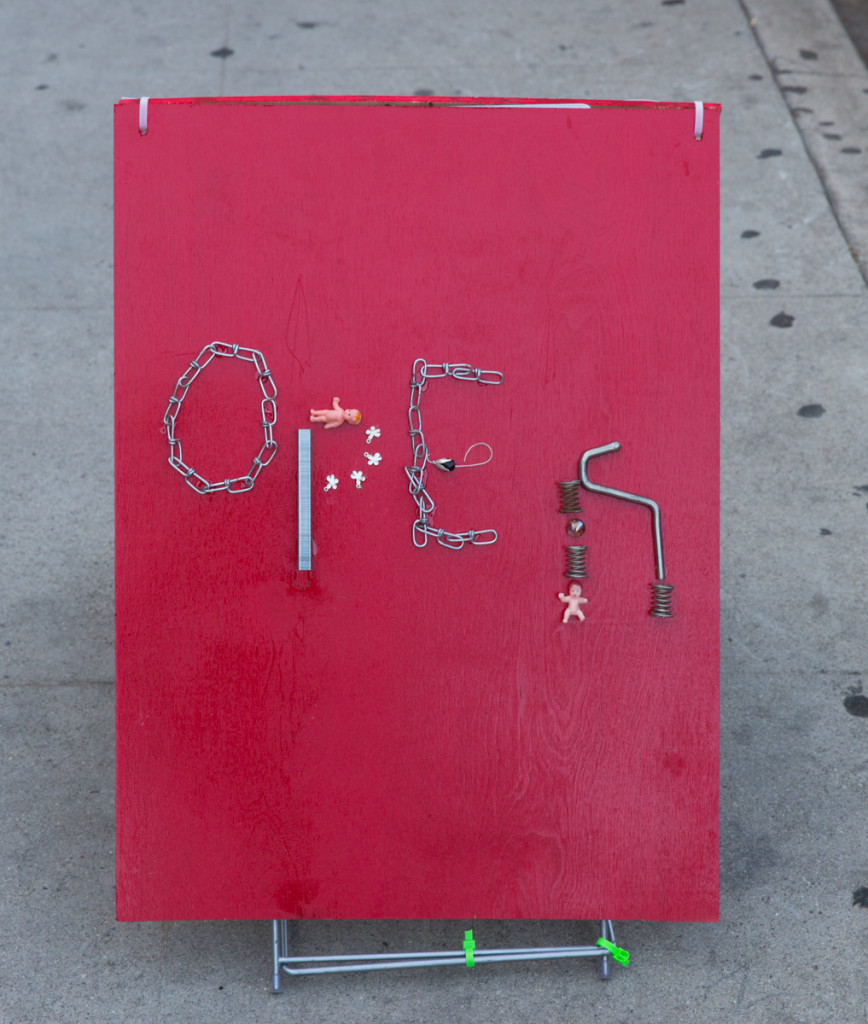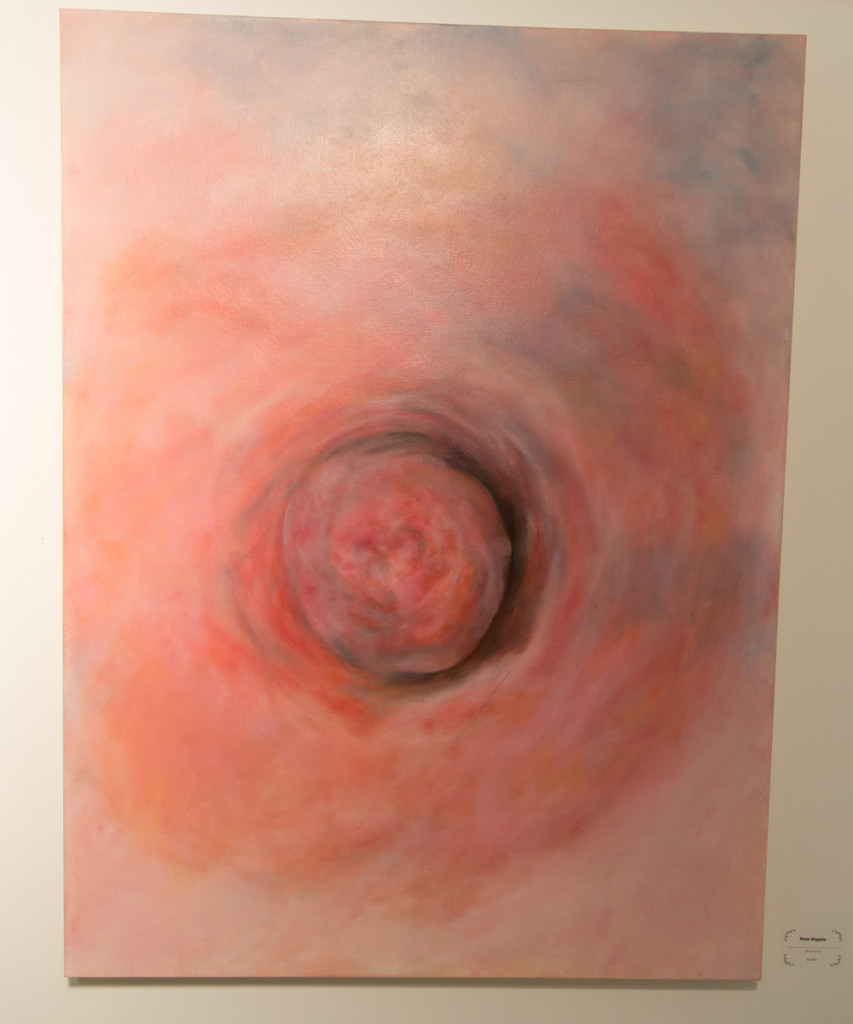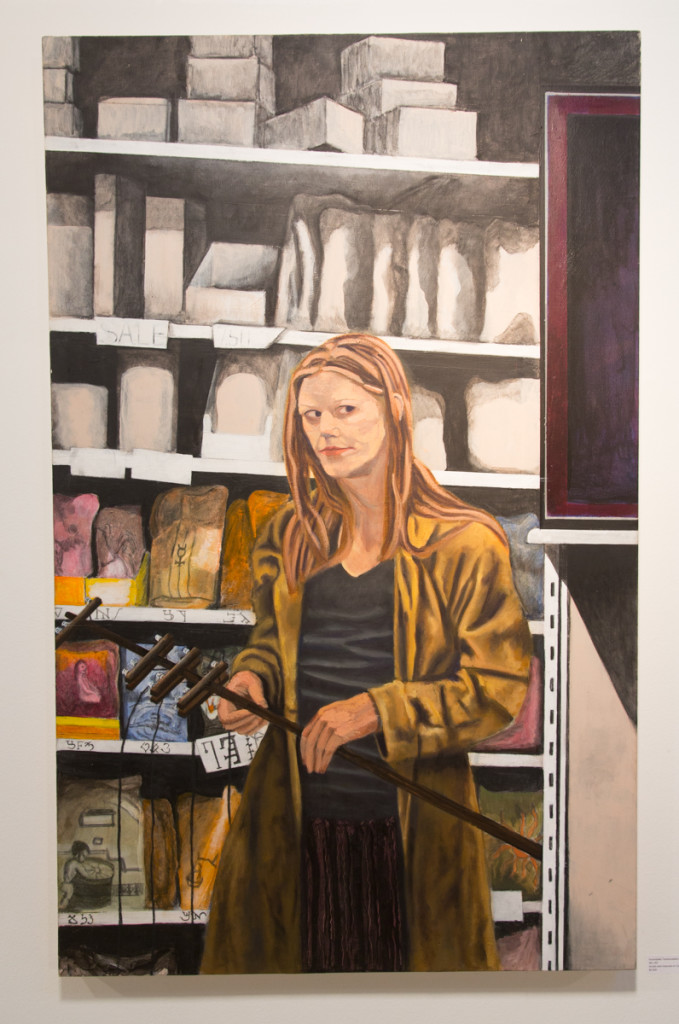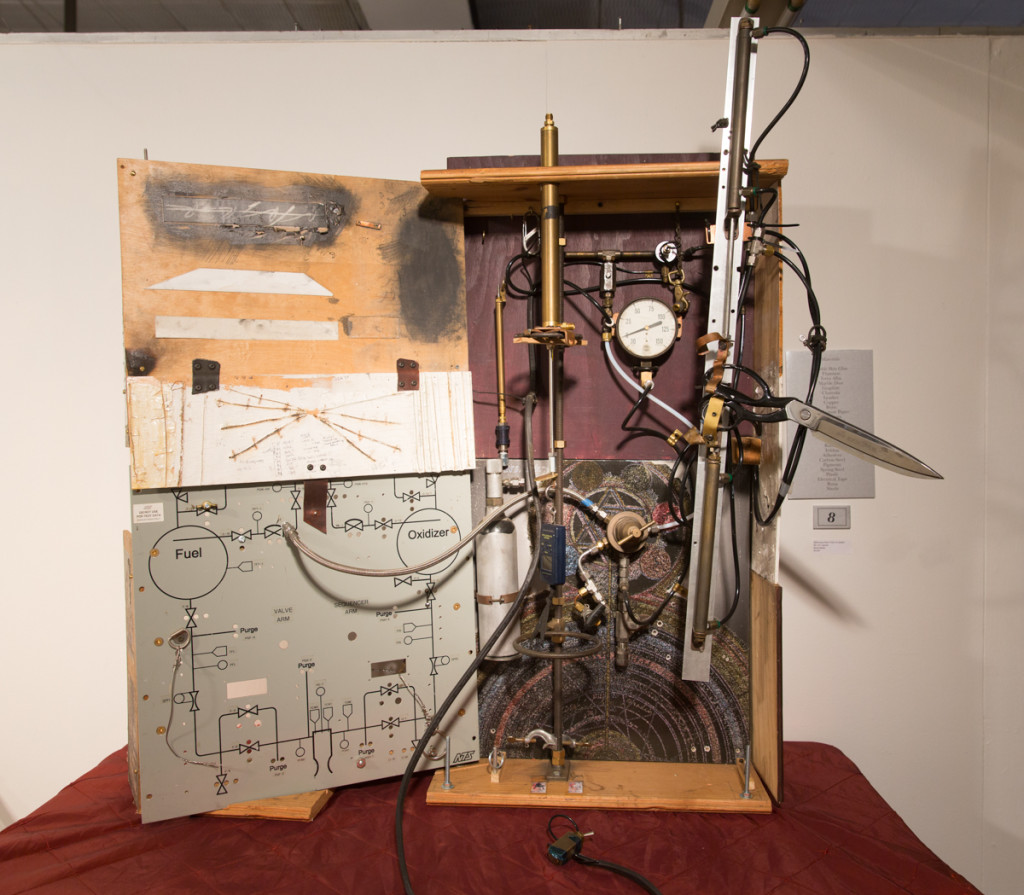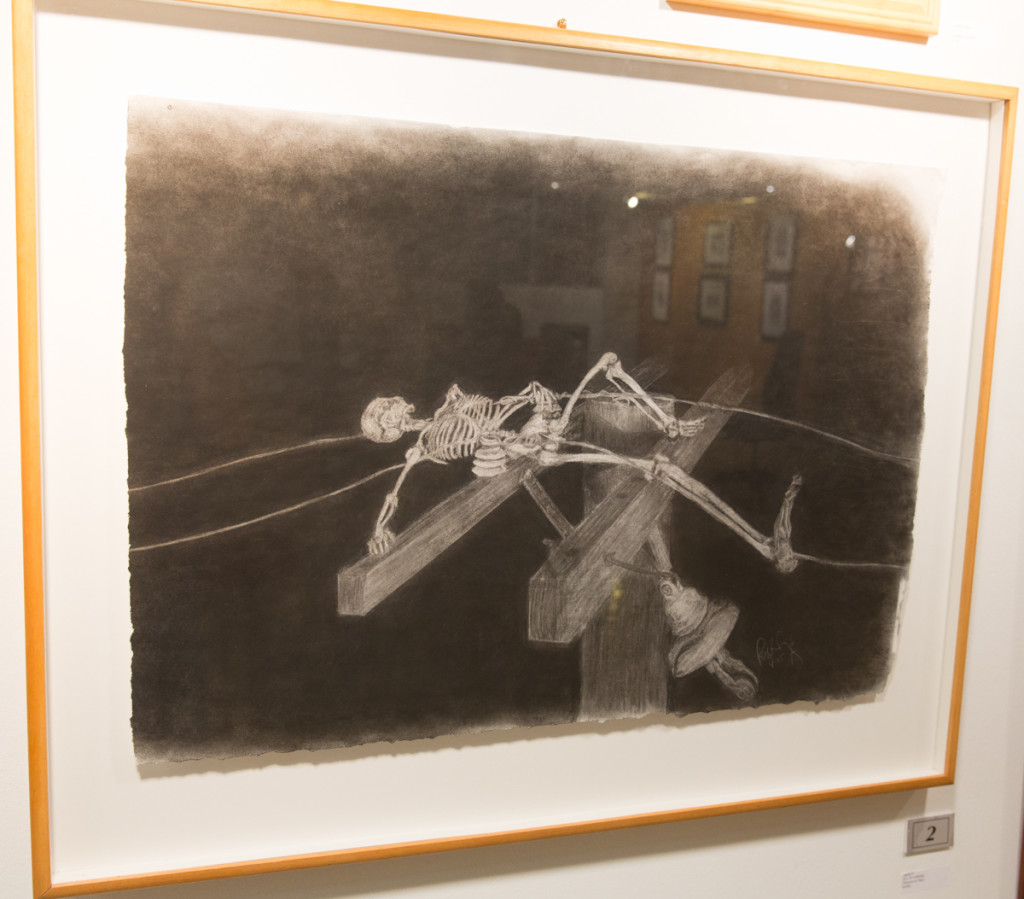Above, artist Robyn Alatorre.
Powerful, incisive, and stimulating, you can’t keep a good history of art clandestine for long.
A Clandestine History of Art is a tour de force for Robyn Alatorre, a fascinating exhibition up now through August 28th at the Neutra Gallery in Silver Lake. Curated by Dulce Stein, Alatorre’s show serves up over 30 works that are provocative and fascinating. The accomplished artist flips art history on its head with a dash of surrealism, adult content, and vibrant imagination that results in a feverishly passionate exhibition.
Alatorre describes her art work as a “mirror which reflects a point of view, an interpretation of the history of art itself…a translation of reality seen through traditional techniques and styles.”
The artist says that her original intent is to “distort, through the shifting of perceptions, reality. In my work, there is something above and beyond sincerity — it is a truth defying element, which can be interpreted as authentic, or pleasing, or beautiful, but is really a parody of perception.”
How to describe Alatorre’s work here? A convention defying alternative history of art without chronology, where ideas are exchanged across time periods, and icons created centuries apart interact as part of the same narrative. Whether pairing Freudian symbolism within a Baroque era painting or a cherub exalting the miracle of modern pharmaceuticals, it may be history, or it may be our ability to see beyond the limited planes of this existence that are changed.
Alatorre’s surreal paintings whimsically and provocatively combine the styles and subject matter of past art movements with commercial objects from our contemporary world, creating new scenarios that are both delightful and disturbing.
“This is work that I’ve accumulated for five years,” Alatorre says of her exhibition. “what I’ve been doing is looking at Renaissance and Baroque art and style, connecting the past with contemporary and pop culture. I try to put a little twist in everything. The titles of my paintings express the themes.”
Her more recent works have shifted beyond the complex and detailed Renaissance style she has embraced and become more minimalistic. “I deconstruct the image, separating it out. I’m trying to work in details beyond the subject matter.”
Nipples are one such focus of detail. “I decided on nipples because of my grandson. Seeing him as a baby, nursing, it just struck me what a ridiculous idea it is to sexualize a nipple.”
Her intense nipple closeups are actually of the male anatomy. “You might assume it is female, but that is simply perception.”
Alatorre has also altered the content of recent paintings by working on different surfaces, such as wood panels, steel, and titanium as well as canvas.
“Oils are my main medium, but I’ve experimented with working in steel and wood, trying to pick subject matter that will go along with the form,” she attests. Her very newest piece, “#100 Happy Days” allowed the artist to utilize spray paint for the first time.
Alatorre’s richly detailed approach carries from her elaborate Renaissance-style pieces to her deconstructed works.
She is in love with the sensual, the gothic, the mythological in her works, many of which have a dark luster.
“I love Caravaggio and Titian, and my color choice stems from there. And as far as subject matter, most of my art has a political or feminist theme that celebrates the power of maternity and procreation,” she asserts.
Mixing mythology, Alatorre takes on the modern worship of medicine with
“Pharmakeia,” featuring a cherub with obvious religious connotations.
She takes on commercial work such as the bright yet bland seascapes of Robert Wyland, or brings Freudian orgasm to the forefront of her “Alpha” piece that riffs on “Leda and the Swan,” above.
“Alpha” companion piece, “Beta,” depicts the Christ child in a cosmos that acknowledges the sexual part of procreation.
Her “Strange Tricks my Sea Monkeys Learned,” based on a Caravaggio painting, was one of her first pieces taking a well-known work and updating it, both trivializing aspects of it and and making a piece more powerful than the original.
“Canto VI from Dante’s Inferno” depicts the sixth circle of hell – gluttony. “It’s based on a Facebook piece my daughter posted, in which she and a friend ate too much ice cream. The words seen are the text from Dante’s work, discussing gluttony as a sin.
“I want people to be drawn to my art because of color and subject matter -and I want them to be drawn in order to change their minds about what I’m saying the more time they spend looking at my work. My goal is to engage the viewer to stay with the paintings through humor, political statements, and visual appeal,” Alatorre relates.
Opening night featured performers in purple and green body stockings circling the exhibition to compliment the colors of her paintings and pull viewers immediately and dynamically into the surreal aspects of the show.
Above, curator Dulce Stein, right, with Kristine Augustyn.
The closing, August 28th from 3 to 6 p.m., includes an artist talk with Alatorre and DiversionsLA.
- Genie Davis; photos: Jack Burke





